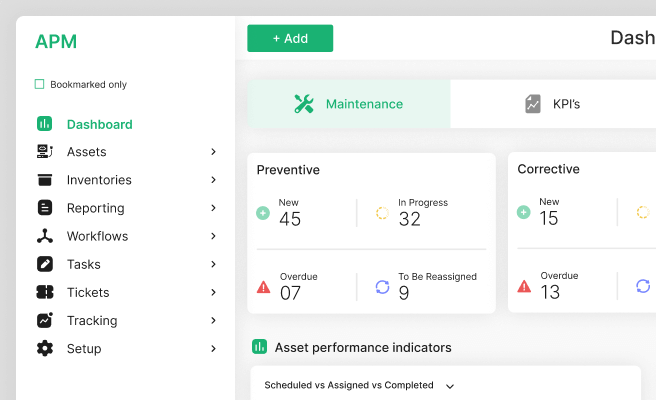Prototype Testing
<p>Prototype testing is a critical phase in product design, particularly in the fast-paced world of digital development. It involves evaluating a preliminary version of a product to identify issues and areas for improvement before the final version is released. This process helps ensure that the product meets user needs and performs as intended.</p>
<p>The concept of prototype testing has evolved significantly over the years. Historically, it was more common in industries like automotive and manufacturing. However, with the advent of digital design, prototype testing has become indispensable for software and app development, especially in climate tech sectors where innovation and sustainability are paramount.</p>
<h2 id="2">Types of Prototype Testing</h2>
<p>Prototype testing can be broadly classified into different types, each serving a unique purpose:</p>
<ul>
<li><strong>Usability Testing:</strong> Focuses on how real users interact with the prototype. It helps in identifying user experience issues and improving the product's usability.</li>
<li><strong>Functional Testing:</strong> Ensures that the prototype functions as expected. This type of testing checks the product's features and functionalities.</li>
<li><strong>A/B Testing:</strong> Compares two versions of a prototype to determine which one performs better. This is particularly useful in refining design elements and user interfaces.</li>
<li><strong>Exploratory Testing:</strong> Allows testers to explore the prototype without predefined test cases. It's useful for discovering unexpected issues.</li>
</ul>
<h3 id="3">Benefits of Prototype Testing</h3>
<p>Prototype testing offers several benefits:</p>
<ul>
<li><strong>Cost Efficiency:</strong> Identifying and fixing issues during the prototype phase is typically less expensive than making changes after the product is launched.</li>
<li><strong>User Satisfaction:</strong> By involving users in the testing process, companies can ensure the final product meets their needs and expectations, leading to higher satisfaction.</li>
<li><strong>Improved Usability:</strong> Continuous feedback from prototype testing helps in enhancing the product's usability, making it more intuitive for users.</li>
<li><strong>Risk Mitigation:</strong> Early detection of flaws and issues helps in mitigating risks associated with product launch and adoption.</li>
</ul>
<h3 id="4">Case Studies in Climate Tech</h3>
<p>Prototype testing has proven to be invaluable in the climate tech industry. For instance, a startup focusing on carbon capture technology used prototype testing to refine their user interface for monitoring CO2 levels. By conducting <a href="https://www.nngroup.com/articles/usability-testing-101/" style="color: #2896FF; text-decoration: underline;">usability tests</a> with environmental scientists, they were able to create a more user-friendly dashboard, ultimately enhancing user engagement and data accuracy.</p>
<p>Another example is a company developing smart irrigation systems for sustainable agriculture. They utilized <a href="https://www.optimizely.com/optimization-glossary/ab-testing/" style="color: #2896FF; text-decoration: underline;">A/B testing</a> to determine the most effective way to display water usage data to farmers, resulting in a design that significantly improved water conservation efforts.</p>
<h2 id="5">Tools for Prototype Testing</h2>
<p>There are several tools available that facilitate effective prototype testing:</p>
<ul>
<li><a href="https://www.invisionapp.com/" style="color: #2896FF; text-decoration: underline;">InVision</a>: A powerful tool for creating interactive prototypes and gathering user feedback.</li>
<li><a href="https://www.figma.com/" style="color: #2896FF; text-decoration: underline;">Figma</a>: An all-in-one design tool that supports real-time collaboration and prototype testing.</li>
<li><a href="https://www.userzoom.com/" style="color: #2896FF; text-decoration: underline;">UserZoom</a>: Provides comprehensive usability testing solutions, including remote testing and user insights.</li>
</ul>
<h3 id="6">Implementing Prototype Testing</h3>
<p>To effectively implement prototype testing, follow these steps:</p>
<ul>
<li><strong>Define Objectives:</strong> Clearly outline what you aim to achieve with the prototype testing. This could include improving usability, testing functionalities, or comparing design variations.</li>
<li><strong>Select Participants:</strong> Choose a representative sample of users who match your target audience. Their feedback will be instrumental in refining the prototype.</li>
<li><strong>Conduct Tests:</strong> Use the selected tools to conduct the tests. Ensure that participants understand the tasks they need to perform and encourage them to provide candid feedback.</li>
<li><strong>Analyze Results:</strong> Review the feedback and data collected during the testing phase. Identify common issues and areas for improvement.</li>
<li><strong>Iterate:</strong> Make the necessary changes to the prototype based on the feedback. Repeat the testing process until the prototype meets the desired standards.</li>
</ul>
<h2 id="7">Conclusion</h2>
<p>Prototype testing is an essential component of the product design process, offering numerous benefits such as cost efficiency, enhanced usability, and risk mitigation. By leveraging tools like InVision, Figma, and UserZoom, and employing various testing methods, companies can ensure their products are user-centric and ready for market success. For those in the climate tech sector, prototype testing is particularly crucial in developing innovative solutions that address environmental challenges.</p> <p>If you’re looking for inspiration to elevate customer and user experience for enterprise-grade products, View our work with the Ministry of Health of Saudi Arabia for curating the UX of an <a href="https://www.whatifdesign.co/work/enterprise-software-for-hospitals" style="color:#2896FF; text-decoration:underline;">Asset Management Tracking Platform</a></p>
<p>Ready to get started? <a href="https://cal.com/akhilak/what-if-design?duration=30" style="color:#2896FF; text-decoration:underline;">Book a 1:1 consultation call</a> with us today.</p>

Let's scale your impact with great design.
Free consultation, no sales pitch
Thank you! Your submission has been received!
Oops! Something went wrong while submitting the form.
Let’s talk
Nothing great is built alone.
Let’s connect about your vision, our work and how we can collaborate.
Get in touch

